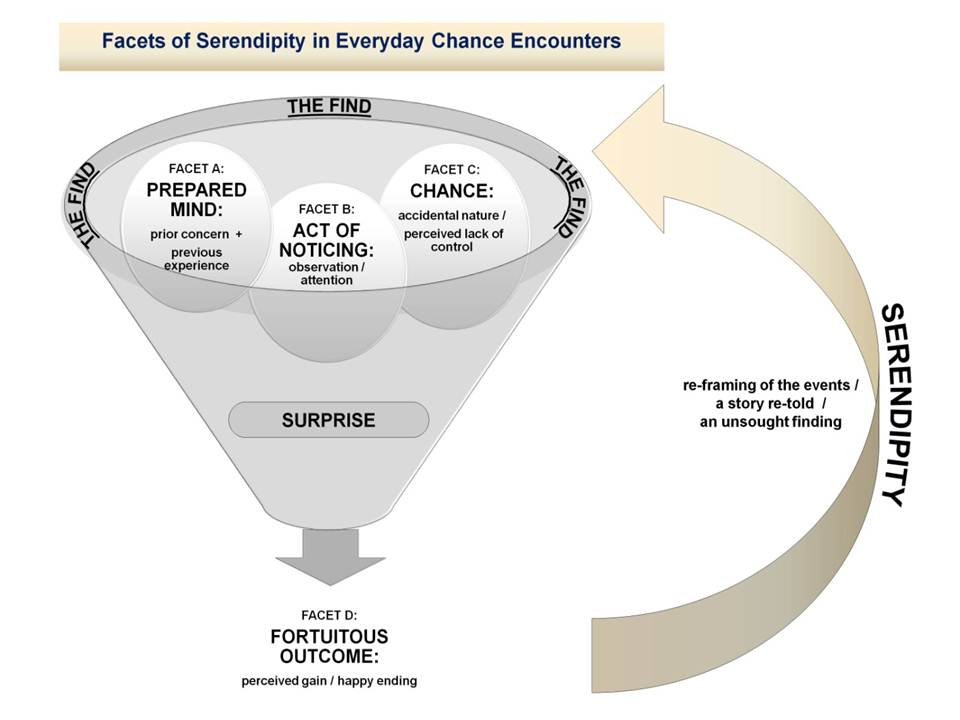Serendipity (2010-12)
In this project, Victoria Rubin, Jacquie Burkell, and Anabel Quan-Haase developed a model of serendipity that can inform the design of information systems. Through a grounded theory approach, we examined naturally occurring accounts of serendipitous experiences in everyday life. This research contributes to the LIS field by discussing an alternative data collection method for serendipity research, outlining a conceptual model of serendipity, and showing the utility of this model for insights into the phenomenon.

Innovation in Libraries (2011-12)
Victoria Rubin, Patrick Gavin and Ahmad Kamal explicated notions of innovation in libraries, based on their discourse and activities, in three stages of analysis. Innovation is not a monolithic concept; its interpretation varies across discipline and context, resulting in an ambiguous theoretical foundation. LIS professionals often refer to innovation without delineating the term’s particular associations and connotations in librarianship. To this end, our research In the first stage, using a preliminary random sample of 32 libraries (8 US academic, 8 US public, 8 Canadian academic, and 8 Canadian public), we content-analyzed the “white” papers publically available on library websites (e.g., mission statements). With the grounded theory approach (Corbin and Strauss, 1990), we identified the various facets of innovation in libraries: areas of innovation, benefiting stakeholders, and supported activities. In the second stage, we focused on the area of technological innovation, and survey the website applications supported by library websites. Through the relative distribution of online technologies, we distinguish standard and non-standard inventories of applications. Combining the results from both stages, we asked whether there is a correlation between a library’s website application inventory and the mention of innovation in its public documents. For example, do self-described innovators host more non-standard technologies? In the last stage, we examined self-described innovators for the nature of the language of innovation: is it used rhetorically or informatively? This research presents a descriptive rather than a prescriptive account of how libraries – as unique institutions – have cultivated an indigenous and flexible sense of innovation.
Previous Research (2006-14)
Earlier projects included Veracty of Big Data, Griefing in Video Games, Artificial Intelligent Agents or Chatbots in Libraries, Multilingual Information Access Tools, Comparative Stylistic Fanfiction Analysis Classification Systems, Credibility of Blogs, Discerning Emotions in Blogs, and Identifying Certainty in Texts.
For all lab’s researchers’ publications, see
Visit online profiles on GoogleScholar – ResearchGate – ORCID.